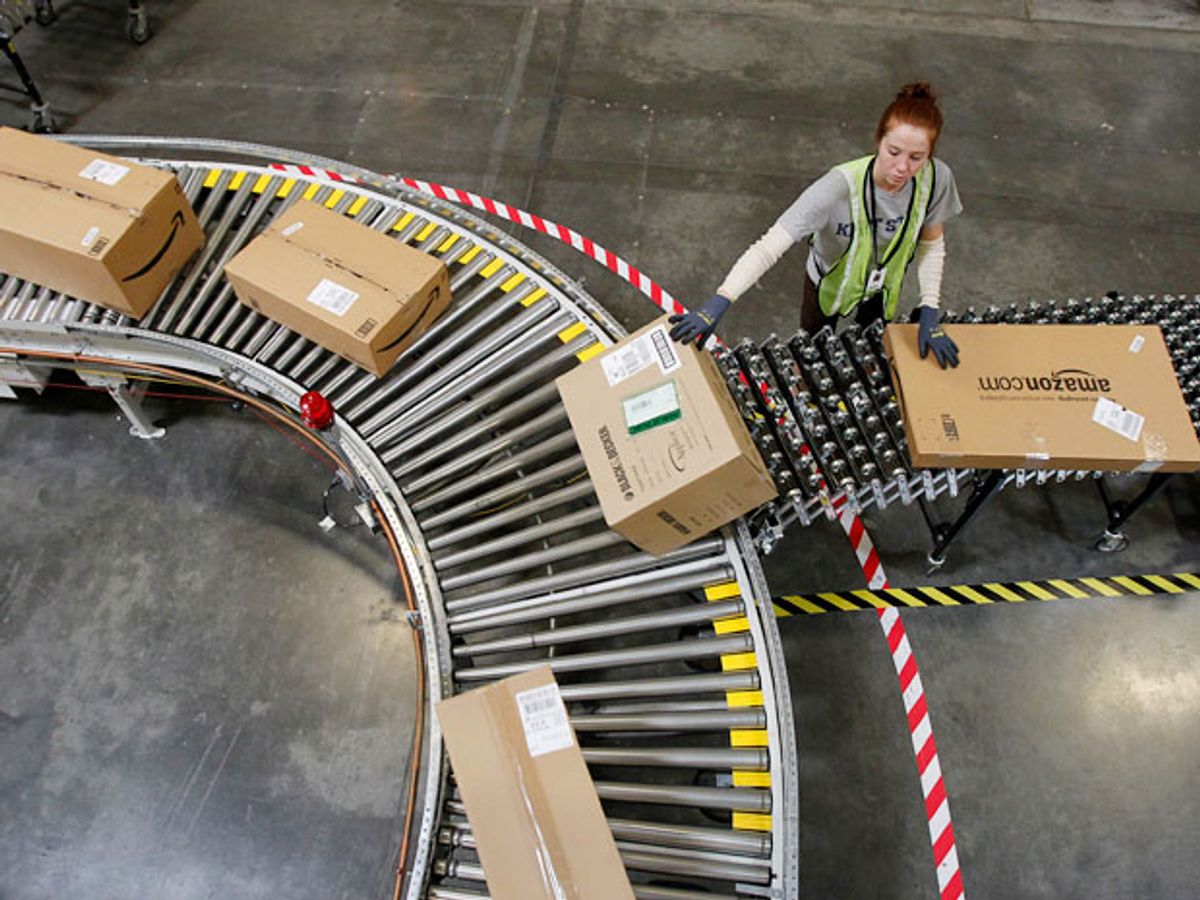3-D printing could someday help Amazon achieve same-day delivery without requiring that huge inventories sit in regional warehouses across the country. But plenty of experts say 3-D printers still have a long way to go before they can make a serious dent in the supply chain that connects businesses to demanding customers.
The Washington Post has been thinking about how Jeff Bezos does business for reasons beyond Bezos' recent purchase of the venerable newspaper. Brian Fung, a technology reporter at the paper, recently speculated on how 3-D printing's ability to create objects on demand could affect the ongoing race between companies such as Amazon, eBay, and Wal-Mart to attract customers based on the ability to deliver purchases within the same day they're ordered.
Amazon has currently taken on the same-day delivery challenge by building up a massive supply chain that can ensure swift delivery of almost any product an Amazon Prime customer might purchase. 3-D printing could change the game by letting the company create products as the digital orders come in, thereby reducing the need for these huge stockpiles and the long supply chain that feeds them.
3-D printing companies such as Shapeways have already begun offering 3-D printing services in addition to selling home 3D printers to DIY enthusiasts and early adopters. Likewise, companies such as UPS and Staples have also promised or set up 3-D printing services for customers.
But a number of big barriers prevent 3-D printing from immediately becoming the killer app for near-instant delivery. For instance, says the Washington Post's Fung, 3-D printers remain limited to printing objects out of just one material such as metal or plastic, so forget about a single printer instantly popping out an electric razor or smartphone. 3-D printed objects also require some polish and finishing before they're ready to meet the usual retail standards.
Today's 3-D printers churn out a wide range of devices that are, in essence, a more inexpensive and capable version of additive manufacturing technology—the same technology that companies have used for decades to quickly create prototypes during product design and testing phases.
On the home front, a new array of 3-D printers costing thousands or perhaps just hundreds of dollars can create a wide variety of (usually plastic) objects for individuals or small businesses. Such printers can make shower-curtain rings and safety razors on the cheap for anyone with the know-how and patience to set up and run the devices. But they won't be spitting out your latest Amazon order anytime soon. (You can, however, turn to a number of digital marketplaces operated by 3-D printing companies to either purchase or download free, open-source designs of some products.)
On the industrial side, 3-D printers have already begun helping huge manufacturers such as Boeing to create limited runs of specialty parts for aircraft. Biomedical labs have begun creating custom-fitted skull implants and other prosthetic body parts tailored for individual patients. Such applications only make business sense because they leverage the current advantages of 3-D printing, such as offering a cost-effective alternative to tooling up an entire factory for making a limited run of specialty parts, or making intricate objects in unusual shapes tailored for individual customer demands.
Still, Amazon might be wise to get its foot in the door by using it for any products or services that can take advantage of 3-D printing's current incarnation. A Houston-based company called Kraftwurx has already set up a more modest vision of what Amazon might eventually evolve into as 3-D printing technology matures: a digital marketplace for selling, then producing and delivering simple 3D-printed products around the world. The Kraftwurx network includes more than a hundred 3-D-printing companies or shops worldwide that allow both sellers and buyers of metal jewelry and plastic figurines to slash delivery times and save on international shipping costs.
Photo: Ross D. Franklin/AP Photo
Jeremy Hsu has been working as a science and technology journalist in New York City since 2008. He has written on subjects as diverse as supercomputing and wearable electronics for IEEE Spectrum. When he’s not trying to wrap his head around the latest quantum computing news for Spectrum, he also contributes to a variety of publications such as Scientific American, Discover, Popular Science, and others. He is a graduate of New York University’s Science, Health & Environmental Reporting Program.


